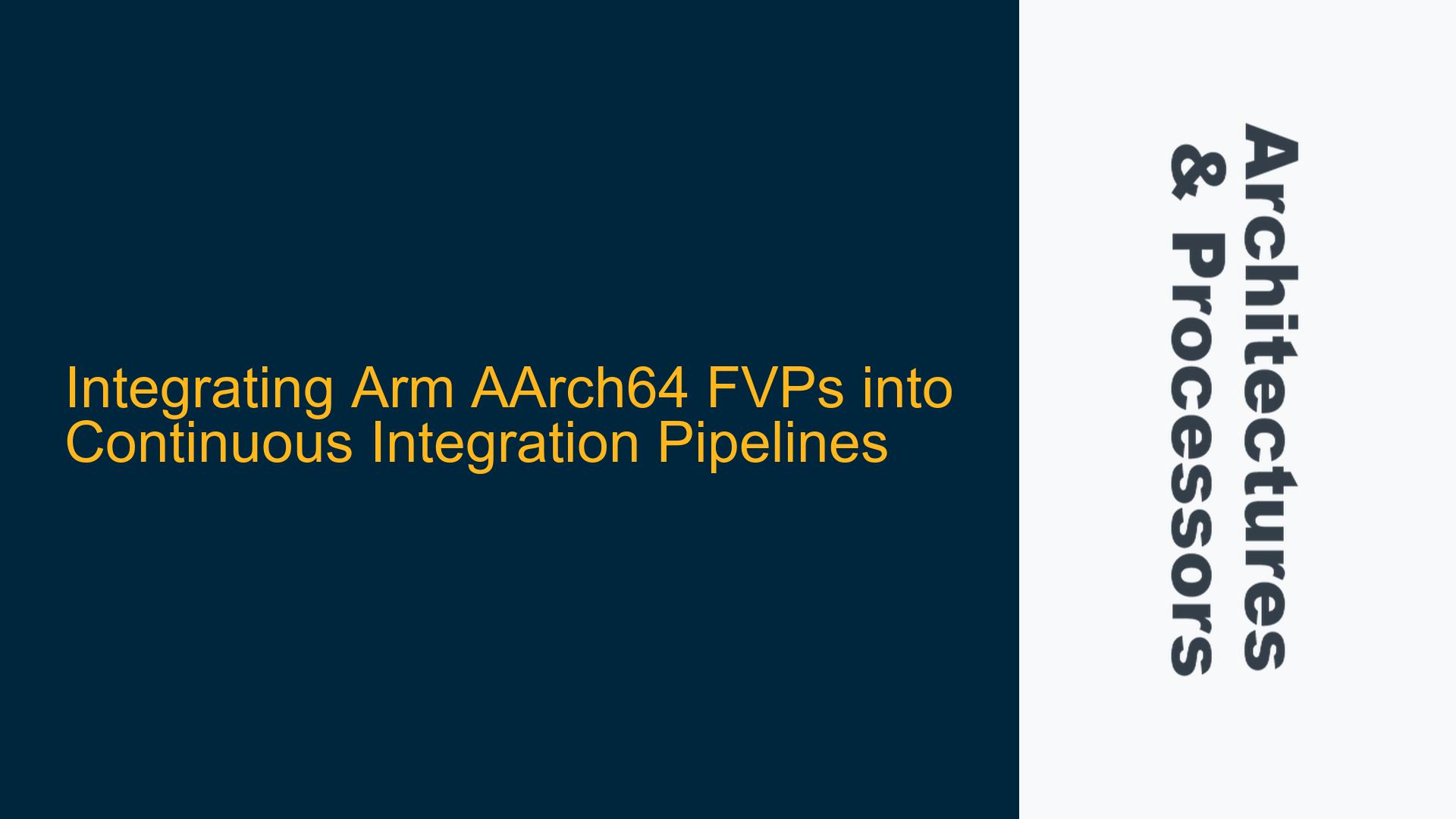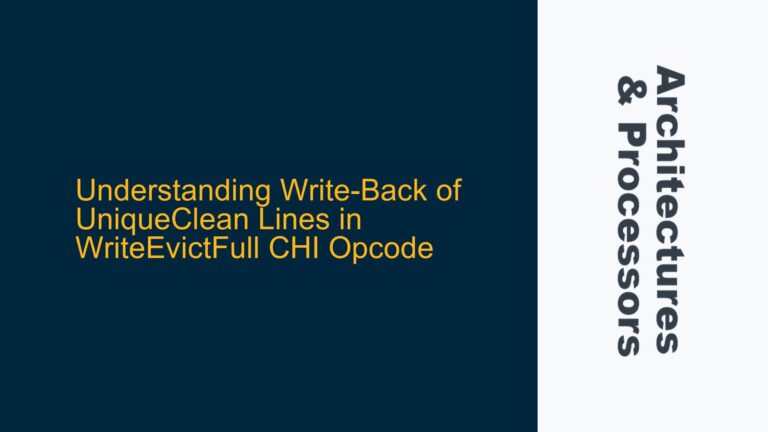Legal and Technical Considerations for Using Arm FVPs in CI Systems
The integration of Arm Fixed Virtual Platforms (FVPs) into Continuous Integration (CI) systems, such as Google Cloud Build, involves both legal and technical considerations. Arm FVPs are simulation models that emulate the behavior of Arm-based systems, allowing developers to test and verify software without needing physical hardware. These FVPs are particularly useful in CI environments where automated testing and validation are critical for ensuring software quality and compatibility with Arm architectures.
From a legal standpoint, Arm FVPs are governed by an End User License Agreement (EULA). The EULA specifies the terms under which the FVPs can be used, including restrictions on redistribution and modifications. While the FVPs available at Arm’s official website do not require a license key, they do require a login to download. This login requirement can pose challenges in CI environments where automated processes need to pull dependencies without manual intervention.
Technically, the integration of FVPs into CI pipelines requires careful consideration of how the FVPs are downloaded, installed, and executed within the CI environment. The FVPs must be compatible with the operating system and architecture of the CI build agents. Additionally, the FVPs must be configured correctly to ensure that they can execute the software under test as expected. This includes setting up the appropriate memory maps, peripheral configurations, and boot sequences.
Challenges in Automating FVP Downloads and Setup in CI Environments
One of the primary challenges in integrating Arm FVPs into CI systems is automating the download and setup process. Since the FVPs require a login to download, this step cannot be easily automated using standard CI tools that rely on public repositories or direct downloads. The login requirement introduces a manual step that can disrupt the automation flow of CI pipelines.
To address this challenge, developers can explore several approaches. One approach is to use a pre-downloaded version of the FVP that is stored in a private artifact repository accessible to the CI system. This repository can be hosted on platforms like Google Cloud Storage, AWS S3, or a private server. The CI pipeline can then pull the FVP from this repository during the build process, bypassing the need for a login.
Another approach is to use a headless browser or automation tool to simulate the login process and download the FVP. Tools like Selenium or Puppeteer can be used to automate the login and download steps. However, this approach introduces additional complexity and potential points of failure, as it relies on the stability of the web interface and the automation tools.
A third approach is to use a service account or API key provided by Arm, if available, to authenticate and download the FVP programmatically. This approach would require coordination with Arm to obtain the necessary credentials and permissions. While this method offers a more streamlined solution, it may not be feasible for all users due to potential restrictions or limitations imposed by Arm.
Best Practices for Configuring and Running FVPs in CI Pipelines
Once the FVP is successfully downloaded and installed in the CI environment, the next step is to configure and run the FVP as part of the CI pipeline. This involves several best practices to ensure that the FVP operates correctly and provides reliable results.
First, the FVP must be configured with the appropriate memory maps and peripheral settings to match the target hardware platform. This configuration can be specified using command-line arguments or configuration files provided by the FVP. The configuration should be carefully reviewed and tested to ensure that it accurately reflects the target system.
Second, the FVP must be integrated into the CI pipeline in a way that allows for automated execution and result collection. This typically involves creating a script or job that launches the FVP, loads the software under test, and captures the output. The script should include error handling and logging to ensure that any issues encountered during execution are properly recorded and reported.
Third, the FVP should be run in a headless mode to minimize resource usage and improve performance. Headless mode allows the FVP to run without a graphical user interface, which is unnecessary in a CI environment. This can be achieved by using command-line options or environment variables provided by the FVP.
Finally, the results of the FVP execution should be automatically analyzed and reported as part of the CI pipeline. This can include checking for specific output patterns, comparing results against expected values, and generating reports or logs that can be reviewed by developers. Automated result analysis helps to quickly identify any issues or regressions introduced by new code changes.
Optimizing FVP Performance and Resource Usage in CI Environments
In a CI environment, resource usage and performance are critical factors that can impact the overall efficiency of the pipeline. Arm FVPs, being software-based simulation models, can be resource-intensive, especially when running complex software or multiple instances in parallel. Optimizing the performance and resource usage of FVPs in CI environments is essential to ensure that the pipeline remains efficient and scalable.
One approach to optimizing FVP performance is to reduce the simulation scope to the minimum necessary for the test case. This can involve disabling unnecessary peripherals, reducing the memory size, or limiting the simulation time. By focusing on the specific components and behaviors that need to be tested, the FVP can run more efficiently and consume fewer resources.
Another approach is to use parallelization and distributed execution to run multiple FVP instances simultaneously. This can be particularly useful in CI environments where multiple tests need to be executed in parallel. Tools like Jenkins, GitLab CI, or Kubernetes can be used to manage and orchestrate the parallel execution of FVP instances. However, this approach requires careful management of resources to avoid overloading the CI infrastructure.
Additionally, developers can explore using faster simulation modes or optimizations provided by the FVP. Some FVPs offer accelerated simulation modes that use just-in-time (JIT) compilation or other techniques to improve performance. These modes may come with trade-offs in terms of accuracy or compatibility, so they should be used with caution and validated against the target hardware.
Finally, monitoring and profiling the FVP execution can help identify bottlenecks and areas for improvement. Tools like gprof, perf, or custom logging can be used to analyze the performance of the FVP and identify any inefficiencies. Based on the profiling results, developers can make targeted optimizations to improve the overall performance and resource usage of the FVP in the CI environment.
Ensuring Compliance with Arm’s EULA and Licensing Terms
When integrating Arm FVPs into CI systems, it is crucial to ensure compliance with Arm’s EULA and licensing terms. The EULA governs the use, distribution, and modification of the FVPs, and non-compliance can result in legal consequences or restrictions on the use of the FVPs.
One key aspect of the EULA is the restriction on redistribution. The FVPs cannot be redistributed or made publicly available without explicit permission from Arm. This means that developers cannot simply upload the FVPs to a public repository or share them with others. Instead, the FVPs must be stored in a private repository or accessed through a secure, controlled mechanism.
Another aspect of the EULA is the requirement to maintain the integrity of the FVPs. The FVPs cannot be modified or reverse-engineered without permission from Arm. This includes any attempts to alter the simulation behavior, extract proprietary information, or create derivative works. Developers must ensure that the FVPs are used as provided and that any modifications or customizations are done in compliance with the EULA.
To ensure compliance, developers should carefully review the EULA and seek legal advice if necessary. They should also implement controls and processes to prevent unauthorized use or distribution of the FVPs. This can include access controls, audit logs, and regular reviews of the CI pipeline to ensure that the FVPs are being used in accordance with the EULA.
Conclusion
Integrating Arm AArch64 FVPs into Continuous Integration pipelines presents both opportunities and challenges. From a technical perspective, the FVPs provide a powerful tool for testing and validating software on Arm architectures without the need for physical hardware. However, the integration process requires careful consideration of legal, technical, and operational factors to ensure successful and compliant use.
By addressing the challenges of automating FVP downloads, configuring and running FVPs in CI environments, optimizing performance and resource usage, and ensuring compliance with Arm’s EULA, developers can effectively leverage FVPs in their CI pipelines. This enables faster and more reliable software development, testing, and validation for Arm-based systems, ultimately leading to higher-quality software and more efficient development processes.






